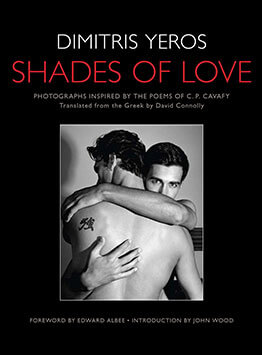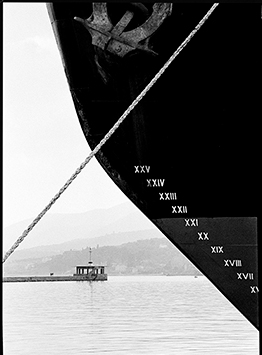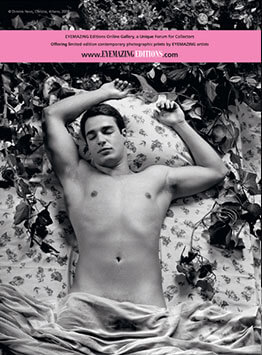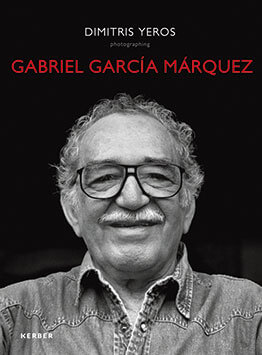The depictions in Dimitris Yeros’s watercolors and paintings move me so because they remind me of a pithy reflection of Paul Valery: “Our most important thoughts are those that contradict our emotions.” This insight suggests that each one of us as a human being making our way on this earth in our present incarnation is decentered even to our selves. That we are a scurrying bundle of inconsistencies that speaks, acts, feels and thinks instantaneous conflict and mixed feeling. What is more is that this conflation of inner contrarieties is an essential aspect of the human condition. This psychic schema is unplanned, unrehearsed and it goes unnoticed and unreflected upon until often much later, often under painful circumstances and occasionally after harmful consequences have resulted. Of course the opposite can also be true: that happiness and serenity can settle in after years of struggling with bouts of inevitable inner turmoil and inconsistencies. Whatever the case, a quality of inevitability pervades our lives. What could we do? we ask of ourselves, rhetorically, after years have passed and we look back at our lives: .it was just the way it was.we didn’t even think about it at the time.it was meant to happen.happenstance. Such reflections offer us an entry point into our appreciation of just how nuanced and how layered the work of Dimitris Yeros actually is without appearing to be so at first glance. Psychodynamic insinuations emerging through Yeros’s charmfully evocative and seemingly effortless formal descriptive grace gives rise to the twin sensations of expansive wonderment and otherness. These sensations anchor and buoy the artist’s vision and draw us to it, as irresistible, yet inexplicable dream.
Yeros depicts what I would call psychic allegories. Each element might be seen to personify some ongoing dynamic within the self. Often this dynamic is ambiguous or irresolvable, at other times the dynamic is more rather than less guessable. Yeros’s scenes are identifiable and intelligible through the attainment of a certain pictorial and compositional mastery: his images are gracefully and succinctly rendered with fluidity, compression and clarity. Stylistically Yeros tends toward making work using simple, reduced outlines. This sense of basic existence or existence on an elemental or primary level is foundational to Yeros’s vision. Yet there is sumptuousness to his fastidious exactitude in the treatment of surfaces, and shading—elements that somehow always appear unpredictably strange. In so doing the artist creates a universal sense of place and timeless space that has a rigorously implacable theatre-set quality reminiscent of the best work of de Chirico, Magritte and Saul Steinberg. Delicacy and strangeness are two essential ingredients at work in Yeros’s watercolors and a wondrous anxiety permeates the work. While the artist’s carefully calibrated style seems effortlessly graceful and lithe in its graphic clarity and articulated boldness it appears as if there is a secret that pervades overall—a sense that something is hiding in plain view. This something could be a quality or a condition that is implied but not made explicit. An example of such a mental paradox that Yeros sets up as part of the hidden narrative is the way his male character ( perhaps a stand-in for the artist) is seen consistently in profile running from the right as a means towards exiting through what in the world of the theater is called “exiting stage left”. This code, in stage direction parlance, indicates that the actor on stage, narratologically speaking, is to make an orderly and uneventful departure so as not to detract or distract, to disappear quietly making way for more interesting events. In other words Yeros’s works on paper make their claim on the viewer by trafficking in deferral. The main character, the hero in the watercolor “Fleeing with an excuse” (2011), for example, would, in normal circumstances, have every right to be and to act concerned, even terrified at the situation in which he finds himself. Yet the artist depicts the hero in a manner that is fascinatingly ambivalent, as ambiguous as the events themselves: the hero is part of the scene, he is reacting to his predicament, yet he appears to be simultaneously removed from his situation. Faced by an impending disaster signaled by a churning active volcano we see him resolutely side-stepping fear as he exits the walls of his fortress-like room. In all of his paintings and watercolors Eros paints states of mind, bearing down on states of perception.
These states of mind are allegoricized and personalized, of course; yet the way the artist structures and composes his scenarios is fascinating. Yeros’s characters are exiting stage left I have mentioned earlier (again: this is the code for “nothing to be alarmed about, everything is as it should be”—a provocative misdirection on the part of the artist and a clear use of situational irony). What is more, the character is depicted as exiting in a coolly unconcerned manner. Irony and cool, it may be proposed, are incompatible means toward the same end. Each enables us to speak our minds while maintaining a small margin for disclaimer. When we use irony we suppress the sense of what we mean. When we resort to cool we suppress the urgency we attach to that meaning. In the normal world you can’t operate through both systems at once. Dimitris Yeros creates a pictorial situation and elaborates a state of mind that is in essence self-contradictory by having his character and the situation in which he finds himself evoke cool and irony. In so doing Yeros captures an inconclusive dream-like essence in his work; something is left in abeyance, in a state of suspension. What becomes palpable through such irresolution is poetic paradox. Through it, Dimitris Yeros engages the viewer’s imagination while uncovering his private world’s emotional and psychic terrain. Dimitris Yeros favors images that engage all of our senses. Such imagery, mediated by happenstance and reverie, is a poetic as well as a reconciling force. Through it the artist comes to terms with the world by using an imaginative project that expands into personal and universal dimensions. Within his vision the artist finds surprising poetic relationships between the subject and the content. In doing so the practice of art for Yeros is a means and an end for self-renewal through self-revelation. For the viewer the art of Dimitris Yeros could best be viewed as cultural gifts with long-lasting effects. Such art enriches this world by offering it a different, yet unique, vision of enchantment and contemplation.
Dominique Nahas is an independent critic and curator based in Manhattan.










